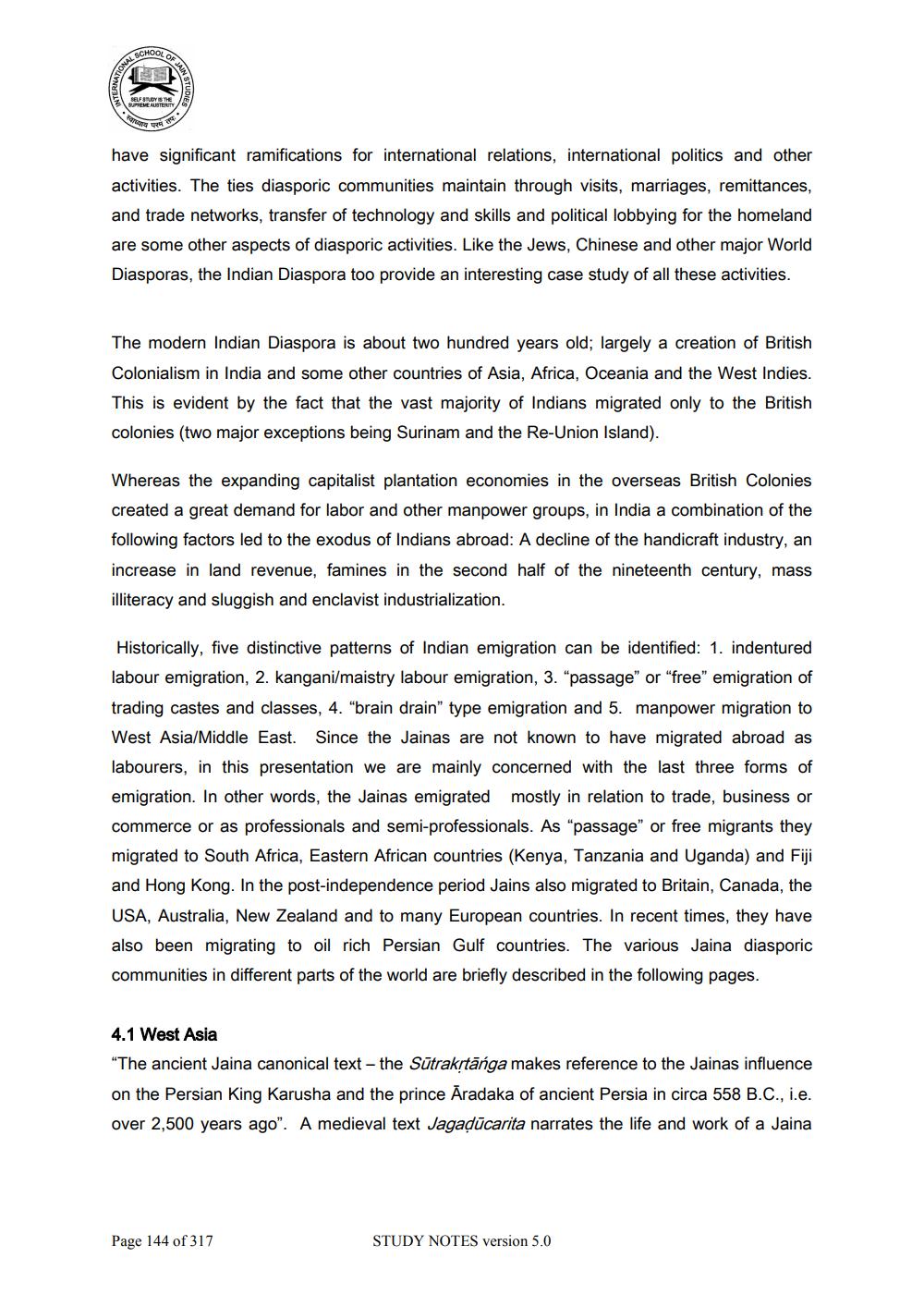________________
have significant ramifications for international relations, international politics and other activities. The ties diasporic communities maintain through visits, marriages, remittances, and trade networks, transfer of technology and skills and political lobbying for the homeland are some other aspects of diasporic activities. Like the Jews, Chinese and other major World Diasporas, the Indian Diaspora too provide an interesting case study of all these activities.
The modern Indian Diaspora is about two hundred years old; largely a creation of British Colonialism in India and some other countries of Asia, Africa, Oceania and the West Indies. This is evident by the fact that the vast majority of Indians migrated only to the British colonies (two major exceptions being Surinam and the Re-Union Island).
Whereas the expanding capitalist plantation economies in the overseas British Colonies created a great demand for labor and other manpower groups, in India a combination of the following factors led to the exodus of Indians abroad: A decline of the handicraft industry, an increase in land revenue, famines in the second half of the nineteenth century, mass illiteracy and sluggish and enclavist industrialization.
Historically, five distinctive patterns of Indian emigration can be identified: 1. indentured labour emigration, 2. kangani/maistry labour emigration, 3. "passage" or "free" emigration of trading castes and classes, 4. "brain drain” type emigration and 5. manpower migration to West Asia/Middle East. Since the Jainas are not known to have migrated abroad as labourers, in this presentation we are mainly concerned with the last three forms of emigration. In other words, the Jainas emigrated mostly in relation to trade, business or commerce or as professionals and semi-professionals. As "passage" or free migrants they migrated to South Africa, Eastern African countries (Kenya, Tanzania and Uganda) and Fiji and Hong Kong. In the post-independence period Jains also migrated to Britain, Canada, the USA, Australia, New Zealand and to many European countries. In recent times, they have also been migrating to oil rich Persian Gulf countries. The various Jaina diasporic communities in different parts of the world are briefly described in the following pages.
4.1 West Asia "The ancient Jaina canonical text - the Sūtrakrtānga makes reference to the Jainas influence on the Persian King Karusha and the prince Āradaka of ancient Persia in circa 558 B.C., i.e. over 2,500 years ago". A medieval text Jagadūcarita narrates the life and work of a Jaina
Page 144 of 317
STUDY NOTES version 5.0




